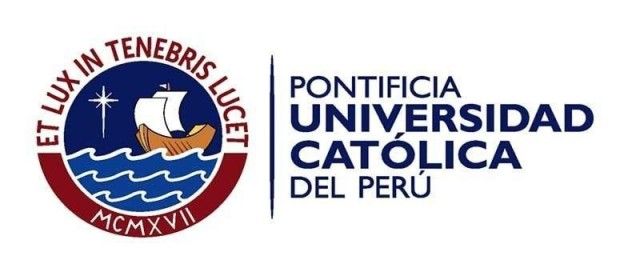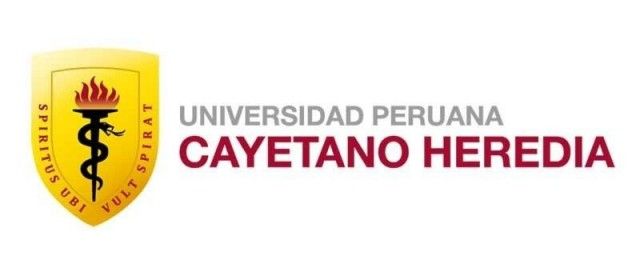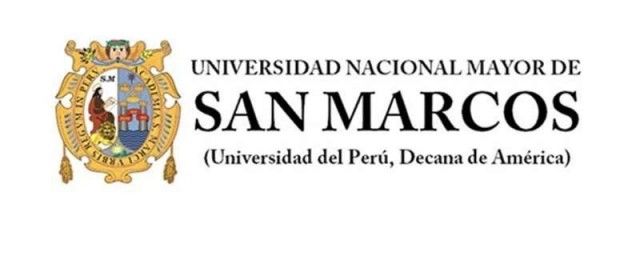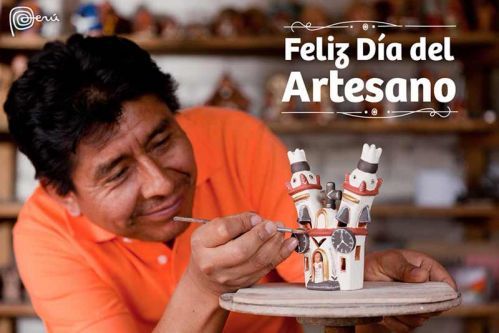- Peru Guide
- Peruvian Visa Types
- Public Holidays & Festivals
- Peru Info
- Culture & Entertainment
- Legal Stuff
- Customs Regulations & Info
- How many days did I get?
- Tourist Visa extension in Peru
- Peruvian Overstay Fine
- International Document for Antecedentes Peru
- Paying Administration Charges
- Permit to Sign Contracts
- Interpol - Ficha de Canje
- Travel Permit
- Subsanacion - Submitting documents
- Extending a Migraciones deadline
- Residence visa extension
- Renewal Carné de Extranjería
- Update Migraciones information
- Carné replacement
- Marrying in Peru
- Driver's License in Peru
- Police Clearance Certificate Peru
- Travel Authorization for Minors
- Finding a Job in Peru
- Domestic Workers in Peru
- Labor Regulations Peru
- Air Passenger Rights
- Safety, Security & Travel Advice
- Shopping in Peru
- Stay Connected
- Business Guide
- Earthquakes
- Emergencies & Help
- History of Peru
- Education, Teaching & Schooling
- Glossary of Terms
- Lima Guide
- Travel & Sights
- Food
- Money
- Events
- Opinion
- Media
- Peru Guide
- Peruvian Visa Types
- Public Holidays & Festivals
- Peru Info
- Culture & Entertainment
- Legal Stuff
- Customs Regulations & Info
- How many days did I get?
- Tourist Visa extension in Peru
- Peruvian Overstay Fine
- International Document for Antecedentes Peru
- Paying Administration Charges
- Permit to Sign Contracts
- Interpol - Ficha de Canje
- Travel Permit
- Subsanacion - Submitting documents
- Extending a Migraciones deadline
- Residence visa extension
- Renewal Carné de Extranjería
- Update Migraciones information
- Carné replacement
- Marrying in Peru
- Driver's License in Peru
- Police Clearance Certificate Peru
- Travel Authorization for Minors
- Finding a Job in Peru
- Domestic Workers in Peru
- Labor Regulations Peru
- Air Passenger Rights
- Safety, Security & Travel Advice
- Shopping in Peru
- Stay Connected
- Business Guide
- Earthquakes
- Emergencies & Help
- History of Peru
- Education, Teaching & Schooling
- Glossary of Terms
- Lima Guide
- Travel & Sights
- Food
- Starter & Appetizer
- Sandwiches
- Soups
- Main Courses
- Salsas, Sauces & Dips
- Desserts
- Snacks
- Drinks & Beverages
- Peruvian Cheese
- Fruits
- Vegetables
- Aji - Chili Peppers
- Grains, Coffee, Beans & Nuts
- Common Herbs
- Other Ingredients
- Money
- Peru Guide
- Peruvian Visa Types
- Public Holidays & Festivals
- Peru Info
- Culture & Entertainment
- Legal Stuff
- Customs Regulations & Info
- How many days did I get?
- Tourist Visa extension in Peru
- Peruvian Overstay Fine
- International Document for Antecedentes Peru
- Paying Administration Charges
- Permit to Sign Contracts
- Interpol - Ficha de Canje
- Travel Permit
- Subsanacion - Submitting documents
- Extending a Migraciones deadline
- Residence visa extension
- Renewal Carné de Extranjería
- Update Migraciones information
- Carné replacement
- Marrying in Peru
- Driver's License in Peru
- Police Clearance Certificate Peru
- Travel Authorization for Minors
- Finding a Job in Peru
- Domestic Workers in Peru
- Labor Regulations Peru
- Air Passenger Rights
- Safety, Security & Travel Advice
- Shopping in Peru
- Stay Connected
- Business Guide
- Earthquakes
- Emergencies & Help
- History of Peru
- Education, Teaching & Schooling
- Glossary of Terms
- Lima Guide
- Travel & Sights
- Food
- Starter & Appetizer
- Sandwiches
- Soups
- Main Courses
- Salsas, Sauces & Dips
- Desserts
- Snacks
- Drinks & Beverages
- Peruvian Cheese
- Fruits
- Vegetables
- Aji - Chili Peppers
- Grains, Coffee, Beans & Nuts
- Common Herbs
- Other Ingredients
- Money
- Peru Guide
- Education, Teaching & Schooling in Peru
- Top Universities in Peru
Top Universities in Peru
Peru probably isn’t the first country crossing your mind when considering studying abroad. At least partly unjustly. The country, and here especially Lima, has a few excellent and well-respected, public and private higher-education institutions which constantly rank among the Top 100 universities in the region.
The universities we introduce you below are of course all officially accredited and recognized by the Peruvian Ministry of Education and offer courses and programs leading to officially recognized undergraduate and postgraduate degrees such as bachelor’s degrees, master’s degrees and doctorate degrees in several areas of study. These degrees obtained in Peru can be validated and recognized abroad – the process depends on regulations there.
Undergraduate studies take two years of general study and another couple of years of specialization. Master’s and doctoral level studies also take around two years each.
A lot of universities in Peru as well have close relations with universities and institutes around the globe ensuring not only higher education standards but as well easier knowledge and student exchange.
Academic calendar in Peru
The academic year in Peru is divided into two semester – a summer semester and a winter semester.
Most courses begin in the summer semester, which depending on the university can start as early as January, but usually in March or latest April and end in June or July. The winter semester usually begins in August or September and ends in December.
Registration, payments, entrance exams and enrollment can be as early as 2 or 3 months before the semester starts. So, it’s advisable to check the dates with each university individually.
International students in Peru
International students that want to study a semester or two in Peru are usually welcome to apply for enrollment either as exchange student from universities abroad having a student exchange agreement with the university in Peru or as international visiting student, so students must arrange admission, courses, payments, etc. directly with the Peruvian university.
Other foreign students planning to do their course of studies completely in Peru have to go through the same application and admission process as Peruvians must.
Admission policy of Peruvian universities
The admission policies are determined by each university. So procedures and requirements vary.
Most universities in Peru have a selective admission policy based on entrance examination – exception: if the student attended a “preferred” school in Peru (so a school that has a special agreement with the university) or took a special preparation course, or was the best of his / her class, he or she can get around it.
All students have to register usually on the website of the university, pay a fee, submit some documents (such as school-leaving certificate when beginning the studies or other documents certifying the level of studies, ID copy, birth certificate, registration form, payment receipt, passport photos, …) and then most have to pass an exam.
Entrance exams at Peruvian universities
These exams vary from university to university, but usually contain multiple-choice questions testing the student’s Spanish language skills, mathematical reasoning, and sometimes knowledge in the area of chosen studies.
International students taking part in an exchange program rarely have to go through the normal admission process as agreements between the universities simplify the temporal admission and therefore don’t have to pass an exam. International visiting students should get in contact with the chosen university in Peru to enquire about the process.
Languages at Peruvian universities
Generally speaking, the language of instruction and conversation at Peruvian universities is Spanish.
While most universities don’t request an official Spanish language certificate, students must have an intermediate or advanced proficiency level to understand classes and assignments.
Certain courses and a few courses especially designed for international students are in English or other languages.
Costs of Peruvian universities
Fees to study at a university in Peru vary. Many universities charge per credit rather than per semester or year.
Each university no matter if public or private has a special system in place which determines the tuition. Factors influencing the costs include for example selected career and / or courses, number of semester credits and the socio-economic situation of the student. Fees and costs for registration, materials, books and photocopies must be covered.
Be aware that most universities in Peru don’t offer international and foreign students scholarships or other financial aids.
List of top universities in Peru
Below you can find a for the moment short list of top universities in Peru. Click on the name of each university to open a detailed description page with information about the university itself, academic ranking, study areas & degree levels, admission process, international students and fees. Provided information should give you a general overview of each university and what they offer. For more details, check out the website of the university of your choice and get in contact with them.
3 results - showing 1 - 3Pontificia Universidad Católica del Perú (PUCP)
Top Universities in PeruFounded in 1907 by Catholic priest Father Jorge Dintilhac of the Congregation of the Sacred Hearts of Jesus and Mary, the Pontificia Universidad Católica del Perú (PUCP) - Pontifical Catholic Unive...Universidad Peruana Cayetano Heredia (UPCH)
Top Universities in PeruThe Universidad Peruana Cayetano Heredia (UPCH) - Cayetano Heredia University is a private, non-profit higher education institution in Lima and considered one of the top 2 medical schools in Peru.Universidad Nacional Mayor de San Marcos (UNMSM)
Top Universities in PeruEstablished in 1551 as the first official university on the American continent, the Universidad Nacional Mayor de San Marcos (UNMSM) is not only the oldest and the longest continuously operating un...3 results - showing 1 - 3Peru Newsflash
New lizard species discovered in Peru
There is still so much new to find out about and see in Peru. Just recently Peruvian scientists discovered a…Peru has the second-worst drivers in the world
For those living and driving in Peru it comes to no surprise. A recent study by Compare the Market, an…Machu Picchu reopens for the first time after the social outbreak
The Ministry of Culture of Peru decided to re-open Machu Picchu after it was closed on January 21 because of…Peru extends the state of emergency in 44 districts
The Peruvian government extended the “state of emergency” in 44 districts of the central departments of…
Peru Event Calendar
Mon Tue Wed Thu Fri Sat Sun 1234561819Date : Wednesday, 19 March 2025202122232425262728293031Upcoming Events in Peru
18Apr20Apr01May03MayMore in the Peru Event & Entertainment Calendar
Latest Content...
- Tourist Attractions & Sights in Peru
Machu Picchu
- International Schools in Peru
International Christian School of Lima - ICS Lima
- Peruvian Visa Types
Peruvian Digital Nomad Visa
- Laws, Norms, Legal Codes & Decrees
Legislative Decree No. 1582 (Modification of the Peruvian Foreigner Law, Nov 2023)
- Peruvian Cheese
Queso Rojo de Lluta
- Peruvian Cheese
Peruvian Queso Andino
- Peruvian Cheese
Peruvian Quesillo
- Peruvian Cheese
Peruvian Queso Mantecoso
- Peruvian Cheese
Peruvian Queso Paria
- Peruvian Cheese
Peruvian Queso Fresco
- Legal Stuff
Extension of a Migraciones deadline
- Legal Stuff
Subsanacion - Submitting documents
- Legal Stuff
Amnesty for Migraciones fines
- Legal Stuff
Replacement for a lost, stolen or damaged carné
Latest Video
Long Reads...
- Peruvian Archaeology
The Mystery of the Nazca Lines in Peru
In the 1920s, when people first flew across southern Peru, they made an astonishing discovery. Stretching below them,… - Peruvian Personalities & Founders
Francisco Pizarro González (1474-1541)
Francisco Pizarro, a peasant from Spain, was one of the least well-equipped conquerors in history. However, in the name… - Peruvian Archaeology
The colorful Fabrics and Textiles of Peru
Europe’s first knowledge of Peruvian textiles was acquired following the Spanish invasion of Peru in 1532, when the… - Peruvian Legends, Myths & Tales
The Jeweled Frog and the Condor
By a quiet pond, at the side of a cloud-topped mountain in Peru, lived a small green frog and his large green family.… - Peru Info
Peruvian Economy
The Peruvian economy is an emerging, social market economy highly dependent on foreign trade and classified as an upper…
Contact us | Editorial Ethics | Support | T&C | Copyright | Privacy | Discussions & Submissions | Cookies Policy | GDPR | CCPA | DMCA































